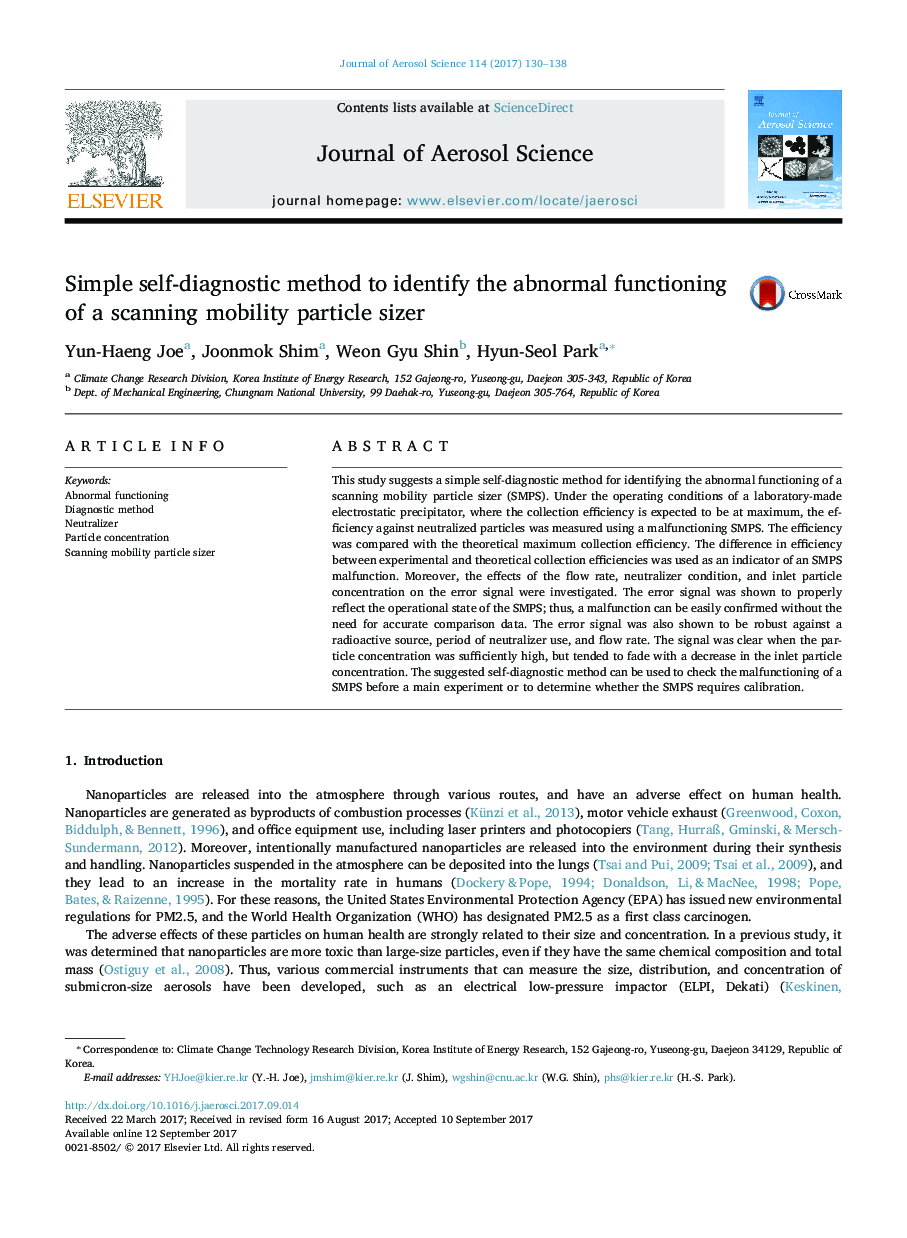| Article ID | Journal | Published Year | Pages | File Type |
|---|---|---|---|---|
| 5753871 | Journal of Aerosol Science | 2017 | 9 Pages |
â¢A self-diagnostic method for identifying the abnormal function of a scanning mobility particle sizer (SMPS) was developed.â¢Difference between experimental and theoretical collection efficiencies was used as an indicator of SMPS status.â¢The robustness of the method to the flow rate, neutralizer condition, and particle concentration was investigated.
This study suggests a simple self-diagnostic method for identifying the abnormal functioning of a scanning mobility particle sizer (SMPS). Under the operating conditions of a laboratory-made electrostatic precipitator, where the collection efficiency is expected to be at maximum, the efficiency against neutralized particles was measured using a malfunctioning SMPS. The efficiency was compared with the theoretical maximum collection efficiency. The difference in efficiency between experimental and theoretical collection efficiencies was used as an indicator of an SMPS malfunction. Moreover, the effects of the flow rate, neutralizer condition, and inlet particle concentration on the error signal were investigated. The error signal was shown to properly reflect the operational state of the SMPS; thus, a malfunction can be easily confirmed without the need for accurate comparison data. The error signal was also shown to be robust against a radioactive source, period of neutralizer use, and flow rate. The signal was clear when the particle concentration was sufficiently high, but tended to fade with a decrease in the inlet particle concentration. The suggested self-diagnostic method can be used to check the malfunctioning of a SMPS before a main experiment or to determine whether the SMPS requires calibration.
